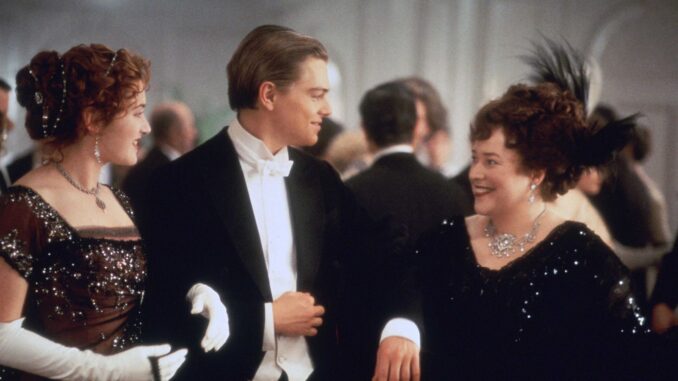
Beyond the Silver Screen: The Real Stories Behind Titanic Movie Characters
James Cameron’s “Titanic” is more than just a romantic epic; it’s a visually stunning and emotionally resonant tapestry woven with historical threads. While the central love story of Jack and Rose is fictional, the film populates its grand ballroom and steerage decks with characters inspired by, or directly drawn from, the very real passengers who perished or survived the ill-fated voyage. By delving into the real stories behind these individuals, we gain a richer understanding of the human tragedy and the social complexities that shaped the narrative of the Titanic’s sinking.
One of the most compelling examples is that of Margaret Brown, more famously known as the "Unsinkable Molly Brown." In the film, she is portrayed by Kathy Bates as a boisterous, kind-hearted woman who champions Jack's cause and provides comic relief. This portrayal, while entertaining, captures only a sliver of the real Margaret Brown. A self-made woman who rose from humble beginnings to become a prominent socialite and philanthropist, Brown’s resourcefulness and determination were legendary. She actively helped others during the sinking, urging the crew to return to the wreckage to search for survivors and even threatening them with her oar if they refused. Her bravery and unwavering spirit were not simply cinematic embellishments; they were cornerstones of her character, earning her the "Unsinkable" moniker and cementing her legacy as a genuine heroine.
In stark contrast, John Jacob Astor IV, portrayed by Eric Braeden, epitomized the opulence and privilege of the Gilded Age. The film depicts him as a powerful, somewhat arrogant, and decidedly detached figure. While the portrayal doesn't delve deeply into his personality, it accurately reflects his societal standing as one of the wealthiest men in the world. The real Astor, however, was more than just a symbol of wealth. He was a renowned inventor, businessman, and author. He perished heroically, helping his young, pregnant wife, Madeleine, into a lifeboat and standing back, accepting his fate with stoic dignity. This act of selflessness, not explicitly shown in the film, highlights the profound choices faced by individuals amidst unimaginable catastrophe.
Then there are the lesser-known characters who represent entire social strata. Thomas Andrews, played by Victor Garber, the ship's designer, embodies the burden of responsibility. The film portrays him as a conscientious and deeply saddened individual who recognized the flaws in the ship’s design that contributed to its demise. While his tragic end is dramatized, the real Thomas Andrews displayed similar dedication and integrity. Witnesses reported him helping passengers into lifeboats and prioritizing their safety above his own. He was last seen in the first-class smoking room, contemplating the ship's blueprints, a poignant image that underscores the devastating weight of his creation's failure.
Beyond the prominent figures, the film also introduces glimpses of ordinary passengers, like the steerage travelers enjoying a lively Irish party. While these scenes are primarily used to establish a sense of community and social disparity, they allude to the thousands of immigrants who embarked on the Titanic seeking a better life in America. Their stories, often relegated to the margins of history, are equally important. The real lives of families like the Goodwin family, traveling in steerage with their children, represent the dreams and aspirations tragically cut short by the disaster. While the film doesn't focus on their individual stories, it serves as a reminder of the sheer number of ordinary people whose lives were irrevocably altered that night.
The beauty of “Titanic” lies not just in its dramatic narrative, but in its ability to connect with real historical events and the individuals who lived through them. By exploring the stories behind the characters, we gain a more nuanced understanding of the human cost of the tragedy. While Jack and Rose may be fictional, the stories of Margaret Brown, John Jacob Astor, Thomas Andrews, and the countless other passengers who sailed on the Titanic offer a powerful and enduring testament to the resilience, courage, and enduring spirit of humanity in the face of overwhelming adversity. The film serves as a poignant reminder to look beyond the spectacle and acknowledge the real lives that shaped the legend of the Titanic.
